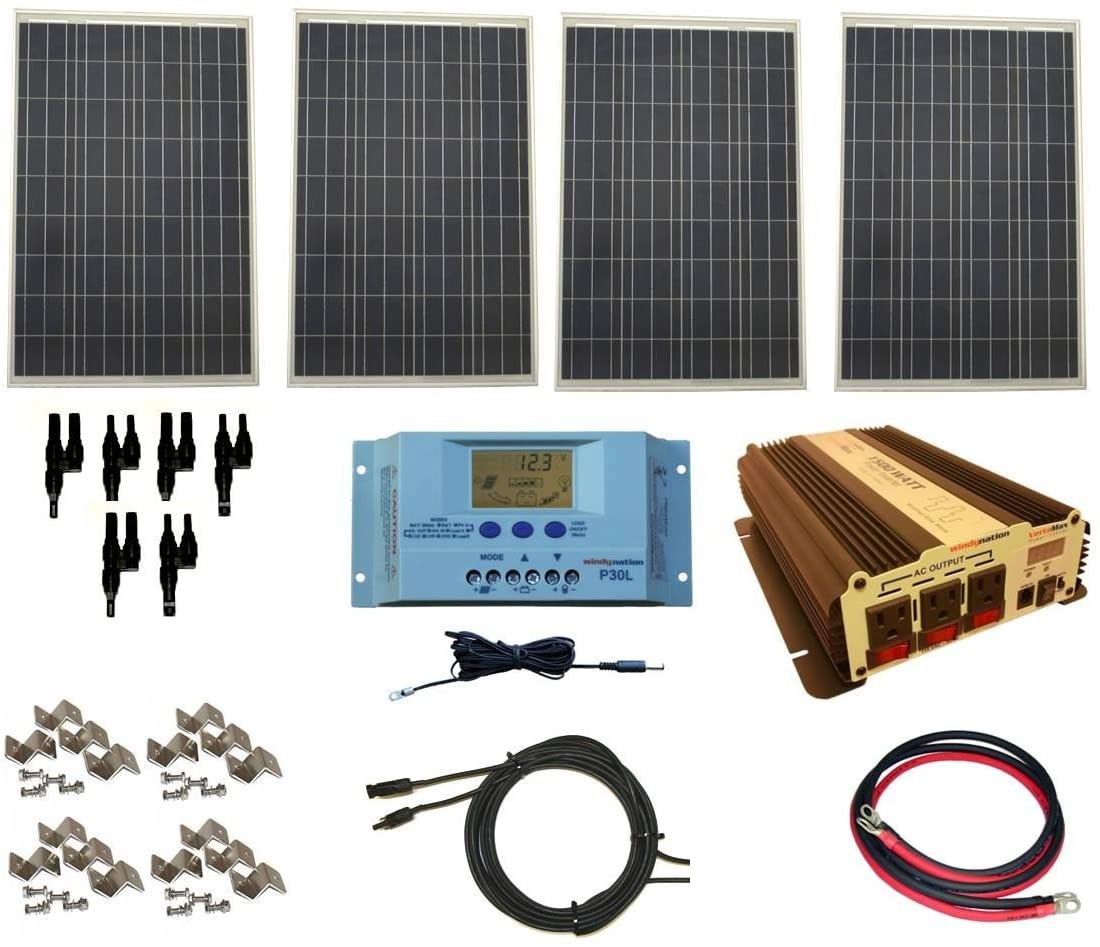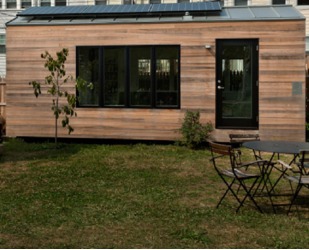Updated 10 months ago
What are the best off-grid solar systems to buy?
Written by Zeeshan Hyder Zeeshan HyderZeeshan is a solar journalist who has long been passionate about climate issues and developed a deep interest in solar power after witnessing its succ...Learn more


Why you can trust SolarReviews
SolarReviews is the leading American website for solar panel reviews and solar panel installation companies. Our industry experts have a combined three decades of solar experience and maintain editorial independence for their reviews. No company can pay to alter the reviews or review scores shown on our site. Learn more about SolarReviews and how we make money.
Choosing the best off-grid system to buy can be a challenging task.
Consumers looking to purchase an off-grid system are faced with an overwhelming amount of choice. This is because:
Off-grid systems are the sum of many parts: Every off-grid solar power system is the sum of many components. They are comprised of solar panels, batteries, charge controllers, inverters, wiring, and racking and mounting
There are many solar brands out there: For each type of solar equipment - solar panels, solar inverters, solar batteries, etc. - there are many manufacturers
There’s lots of room for customization: Solar systems are completely modular, so each component can be swapped for a different size or different brand
Luckily for you, we here at SolarReviews have researched the market and narrowed down your options for you. In this blog, we share our picks for the best off-grid solar systems for every need.
Editorial note: This is an unbiased review; we have no financial ties with any of the companies mentioned. The content of this blog is based on research and information available at the time of writing.
Best off-grid solar kit for RVs and boats
WindyNation 400W kit (pictured above)
Price: $769.98 - $1,899.99, depending on which option you choose Buy Now
Key specs
Solar panels: (4pcs) 100 watt WindyNation polycrystalline modules
Inverter: 1500W VertaMax modified sine wave inverter
Battery options:
- No battery
- 300Ah /3.6kW lead-acid batteries [150Ah/1.8kW usable capacity at 50% depth of discharge, or DoD)*
- 400Ah/4.8kW lead-acid batteries (Usable capacity: 200Ah/2.4kW @50% DoD)
- Both battery options use BattaMax 12V 100Ah AGM (maintenance-free) deep-cycle batteriesCharge controller: 30-amp P30L Solar Charge Controller (w/ LCD Display)
Other: Wiring, connectors, all necessary solar mounting hardware
A quick note about depth of discharge
The maximum recommended depth of discharge (DoD) refers to the level to which you can drain a battery while maintaining the battery’s health. Draining the batteries beyond this point is not recommended as it will weaken the batteries and reduce their total lifespan.
For lead-acid batteries, the maximum recommended DoD is generally 50%. That means that a lead-acid battery bank with a nominal energy storage capacity of 3.6 kW has a practical usable capacity of 1.8kW.
With lithium batteries the max recommended DoD is much higher, between 80-100%.
What we like about the WindyNation 400W kit
Small system footprint means that it can easily be installed on small structures, RVs, and boats
The inverter’s 1500W capacity is very high for a system of this size. It will allow you to run several appliances simultaneously, or run power-hungry appliances like power tools for a short period
You can easily expand this system by stacking on extra solar panels and additional batteries, although you’d probably want to upgrade the charge controller in the process
What we don’t like
On Amazon, the default kit includes a modified sine wave inverter; these are not ideal for running sensitive electronics. It's possible to upgrade to a pure sine wave inverter by contacting the vendor - we recommend you do this
It uses polycrystalline (poly) solar panels. Poly panels have lower efficiency and don’t look as attractive as their sleek, black siblings - monocrystalline panels
This WindyNation 400W system is the ideal size for recreational vehicles such as RVs and boats, but would work just as well in a tiny cabin.
The system is the right size to comfortably run LED lights, a mini-fridge, chargers, a router, and even several hours of television. Thanks to the high capacity of the inverter, you can even run energy-hungry devices like a microwave or electric kettle.
You definitely want to have adequate battery storage with this off-grid system - that’s the case with any off-grid solar system, actually. Unless you already have batteries you’re planning on using, we recommend going for the maximum storage option, i.e. 400ah of AGM lead-acid batteries.
Best off-grid solar kit for cabins and sheds
altE 1.83kW ‘Tiny House’ Base Kit #3
Price: Starting at $5,329.27 Buy Now

Image source: altE store
Key specs
Solar panels: (6pcs) Seraphim 305 watt monocrystalline all black
Inverter: Samlex EVO 4000W 24V pure sine wave inverter/charger
Charge controller: Outback Power Flexmax 80 MPPT Charge Controller
Battery options:
- 15.84kW 6V Trojan flooded lead acid (FLA) batteries (7.9 kW usable capacity @ 50% DoD)
- 12.96kW 12V KiloVault AGM lead acid batteries (6.5 kW usable capacity @ 50% DoD),
- 10.3 kW 12V KiloVault lithium batteries (8.2 kW usable capacity @ 80% DoD);
- The lead-acid batteries have a recommended depth of discharge of 50%, while for the lithium battery it’s 80%Other: Breakers, surge protection devices (x2), wiring, connectors, mounting hardware options for metal roof, shingle roofs, and top-of-pole
What we like about it
The altE store has a reputation for excellent sales and support
The monocrystalline Seraphim solar panels - they have a sleek, black look, an above-average 15-year product warranty, and have passed the Thresher Test, which means they are very durable and capable of withstanding large loads of snow. Better yet, Seraphim solar panels are American-made in a factory in Tennessee, unlike most solar panel brands which are manufactured overseas
The inverter is a pure sine wave system, which means it can reliably power all kinds of electronics, including computer equipment
It has three convenient mounting options with transparent pricing: metal mounts, shingle mounts, and pole mounts
What we don’t like
The Samlex inverter’s warranty. While the Samlex brand has a reputation for durability, the warranty for this unit is a measly 2 years. This simply isn’t good enough these days given that other inverter brands offer warranties of 5 years or longer
The short warranty offered on altE’s proprietary ‘Kilovault’ lithium battery option. By contrast, leading lithium ion products like the Tesla Powerwall, LG Chem Resu and sonnen Eco all offer 10-year warranties
This tiny home solar kit combines reliable brands in a relatively affordable package. Seraphim, Samlex, Outback, and IronEdge - the makers of the panels, inverter, charge controller and mounts, respectively - all have good reputations for performance and reliability.
The only weak link here is the Kilovault lithium battery; while we like the lithium iron phosphate technology it uses, its 3-year warranty is unacceptable given that the Tesla Powerwall and other leading brands offer 10-year warranties. We recommend sticking with the lead-acid batteries, which will also help keep total costs down.
Another positive here is the vendor - altE store - which has an excellent reputation in the DIY solar community. They may not have the spiffiest website, but they do have advanced expertise in off-grid solar, as evidenced by their in-depth educational videos on the topic. As such, they can help you design and customize an off-grid solar system for your needs and provide the necessary after-sales support.
Those seeking to support American manufacturing will be happy to know that the maker of the solar panels, Tier 1 brand Seraphim, has a manufacturing facility located in Jackson, Mississippi.
What to keep in mind before you buy
Each system we’ve presented in this blog has standout features that makes it the best in its class.
That said, keep in mind that there is an almost infinite variety of options and configurations when it comes to going off-grid. That means that it’s always possible to add, subtract, and modify to make your systems the best for your specific needs.
As such, before settling on a system, we recommend that you speak with a qualified vendor or installer who can accurately assess your needs and design and design a system accordingly.
Key takeaways
The WindyNation 400W has an inverter that can handle high instantaneous loads, and is great for boats and RVs.
altE store offers great sales and support; their “Tiny House Kit #3” is a perfect for powering cabins, sheds, and small homes.
Not sure how off-grid solar systems work? Read this introductory guide.
Zeeshan is a solar journalist who has long been passionate about climate issues and developed a deep interest in solar power after witnessing its successful adoption in Australia. He has previously worked as a journalist for a major news organization, covering energy, climate, and environmental stories, among other topics. He also served as an organizer for the Pakistan Youth Climate Network, an advocacy group aimed at raising climate awareness...
Learn more about Zeeshan Hyder